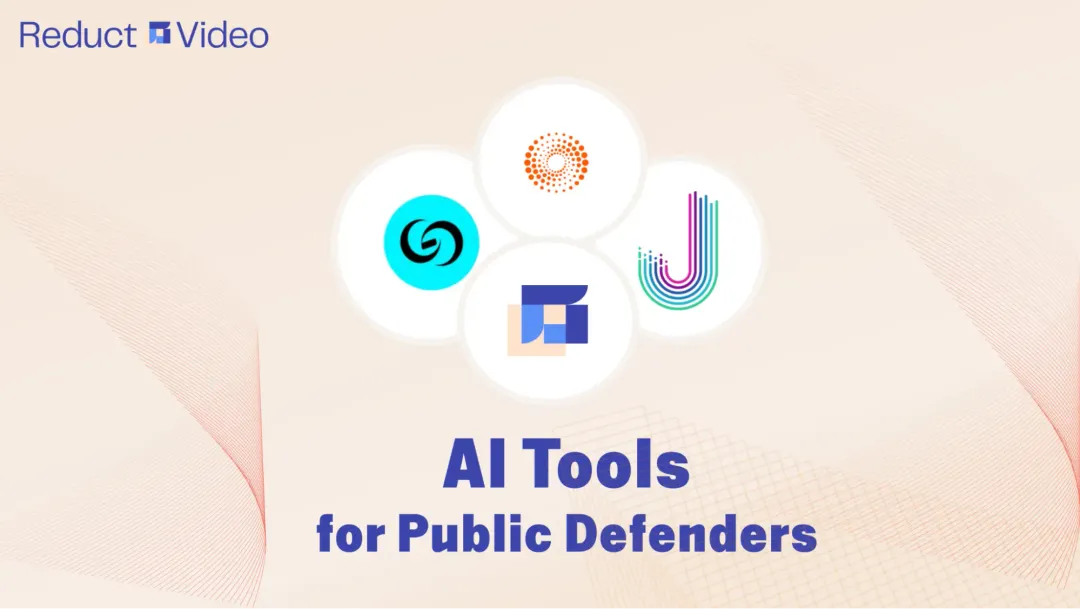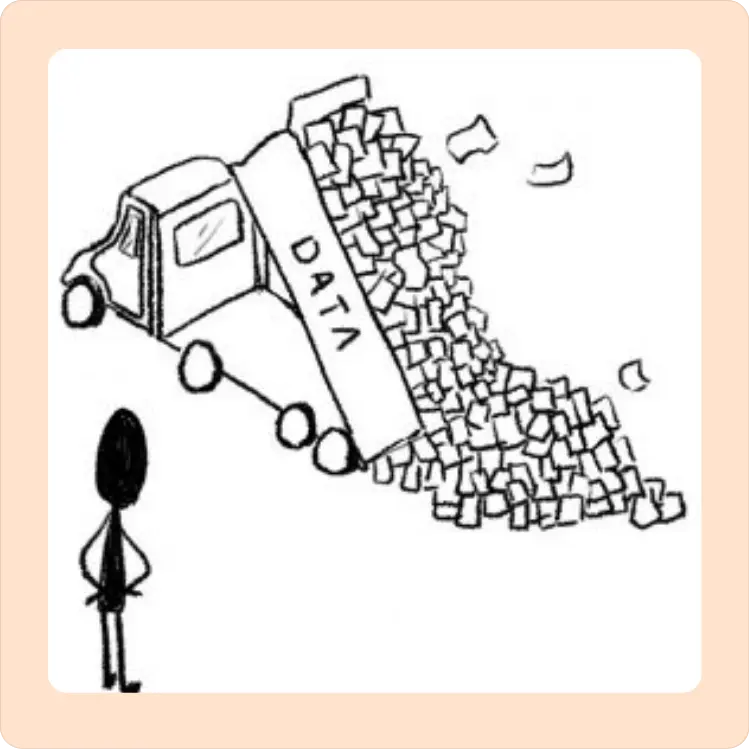AI Tools for Public Defenders
March 2025
·
5 min read

Public defenders have been grappling with an overwhelming influx of digital evidence—making case preparation more exhausting than ever.
A 2023 Goldman Sachs study confirmed that 44% of legal work is automatable, yet most offices still manually scrub 500+ video clips for a single privacy redaction.
Our public defenders are exhausted from these relentless and mundane tasks.
In this situation, hiring more staff seems logical, but paralegals can’t scale with the tsunami of digital evidence that the defenders receive in a single case.
And no county can afford the multitude of paralegals needed to review hours of body-worn cam footage and wiretap recordings received during discovery.
This is why the defense offices are turning to AI tools, not because it’s trendy, but because, in an era of infinite evidence and finite budgets, they’ve run out of options.
While a paralegal spends three days syncing conflicting bodycam angles, an AI stitches timelines in minutes.
In this post, I’ll explain how these tools are changing the game for public defenders.
1. ChatGPT for Westlaw: CoCounsel by Thomson Reuters
Public defenders turn to Westlaw to find relevant case precedents, statutes, and legal arguments to support their position in court.
Westlaw offers access to over 40 million cases from U.S. federal and state courts, along with millions of statutes, administrative codes, and legal articles.
Even a narrow search (e.g., "invalid search warrants") spits out thousands of case files. And the sheer volume of cases and files makes it challenging for public defenders to quickly identify the most relevant precedent.

It was a time consuming task until Casetext by Thomson Reuters developed a professional-grade Gen AI assistant to minimize the burden of the legal research process.
This generative AI tool is built on more than 150 years of authoritative legal content and expertise. It functions as a version of ChatGPT specifically designed for defenders.
The front-line defenders from Miami-Dade Public Defense Office have started using Casetext's AI-powered legal assistant–CoCounsel.
The AI tool, powered by ChatGPT-4 and Thomson Reuters’ Westlaw Precision, analyzes thousands of cases in seconds.
For example, a defender inputs: "Find cases where drug possession search warrants were invalidated due to insufficient probable cause."
CoCounsel instantly generates a memo with relevant rulings, summaries, and citations—even identifies appellate decisions that might have been overlooked.
With the help of CoCounsel, defenders can swiftly build airtight strategies, file motions on time, and focus on client strategy.
The tool’s precision reduces risk of missing critical precedents, while its speed frees hours for high-impact work.
The catch? While CoCounsel accelerates research, defenders must still verify AI outputs and apply human judgment to arguments.
Leverage AI’s efficiency without over-relying on it, ensuring technology enhances, rather than replaces, the defender’s expertise.
2. Body-worn camera review with court-ready transcripts: Reduct.video
Public defenders increasingly receive cases with dozens of bodycam and surveillance videos—imagine a single arrest scene captured by 10 officer's bodycam, each generating hours of footage.
Manually syncing timelines, comparing angles, and spotting contradictions (e.g., an officer’s claim of a "threat" vs. another officer’s footage showing a calm suspect) becomes a needle-in-a-haystack task.
Reduct.Video solves this issue. The software syncs all footage into a single, scrollable timeline, displaying multicam angles side-by-side. For instance, in a disputed arrest, defenders can instantly compare:
-
Officer A’s bodycam showing a suspect calmly kneeling.
-
Officer B’s footage, mysteriously paused during the same moment.
-
A store surveillance clip capturing excessive force.
Reduct not only offers a multicam sync feature but also automatically generates accurate, searchable transcripts from bodycam footage and syncs the text with video timestamps.
For example, a defender inputs a keyword like "stop resisting" and can instantly jump to every relevant clip.

Defenders uncover hidden truths in hours, not weeks, like proving a client’s innocence by syncing an officer A’s bodycam with officer B's bodycam’s "missing" 30 seconds.
With Reduct, you can export your transcripts as ASCII txt or PDF, with formatting that meets most federal and state court systems’ specifications. You can also include line numbers and timestamps as needed.
The balance lies in trusting automation without skipping human verification so that defenders can turn hours of footage into actionable insights, not oversights.
3. Secure and compliant redaction for law firms: CaseGuard
Bodycam or surveillance camera captures a lot of footage filled with sensitive details- license plates, bystander faces, or minors—public defenders that receive these recordings as evidence must redact these details to protect privacy and comply with court rules.
Manually blurring these elements across hours of video (e.g., 10 bodycams from a single arrest) is tedious, error-prone, and risks missing critical frames, exposing client confidentiality or violating privacy laws.
CaseGuard Video Redaction, a powerful standalone tool, allows users to redact videos, audio files, documents, and images.
This AI-powered software automatically detects and redacts faces, license plates, and other identifiers across videos.

For example, in a protest-related case with 20 surveillance clips, CaseGuard:
-
Blurs all bystander faces not involved in the incident.
-
Masks license plates of vehicles unrelated to the case.
-
Flags frames where an officer’s body cam accidentally captured a minor’s face.
With CaseGuard, defenders can process terabytes of footage in minutes, ensuring compliance without sacrificing efficiency.
Public defenders can now redact videos 10x faster, avoid costly leaks of private data, and focus on building arguments instead of pixel-by-pixel edits.
The catch? While AI handles bulk redaction, defenders must still review outputs. Automation might miss obscured faces (e.g., hats, masks) or over-redact critical details.
Trust AI for speed while applying human scrutiny for accuracy, ensuring privacy and justice aren’t compromised by a misplaced blur.
4. Case management software with secure data storage: eDefender
Public defenders receive a huge amount of case documents either through subpoenas or from prosecutors during discovery.

They often rely on paralegals to help organize and make sense of the collected data.

Defense offices manage cases with terabytes of evidence—security footage, police reports, digital files—scattered across emails, USB drives, and paper records.
Locating a single critical detail, like a timestamp discrepancy or a buried witness statement, can take hours that can delay strategy and court deadlines.
To solve this issue, Maryland Office of Public Defender (OPD) implemented eDefender, a case management system that allows OPD to organize and manage case files within the tool.
The cloud-based system centralizes all case files—videos, documents, communications—into searchable folders which are accessible securely to defenders and paralegals working on the same case.
The tool seamlessly integrates with Power BI dashboards and automatically flag inconsistencies (e.g., conflicting timelines) and track caseloads, deadlines, and trends.
Offices also use dashboard analytics to uncover systemic issues, like recurring evidence gaps, advocating for broader reforms.
With the help of eDefender, defenders and paralegals can quickly find and share key evidence, resolve contradictions, and meet tight deadlines.
eDefender keeps mountains of sensitive data secure and accessible—no more "I can’t find the file" or “Who has the latest report?”
The catch? Too restrictive tools, and collaboration stalls; too open, and data risks exposure.
For decades, public defenders fought uphill battles with limited resources. Today, they’re drowning in data but tools like AI legal assistants, auto-redaction software, and multicam analysis are throwing them a lifeline.
These innovations aren’t just saving time; they’re rewriting what’s possible in justice reform.
While technology can spotlight a missed precedent or sync 10 body cams into one truth, it can’t replace the defender who stands in court, armed with both evidence and empathy.
So the future of public defense isn’t AI or attorneys–it’s both. And with the right balance, we might just level the playing field.


